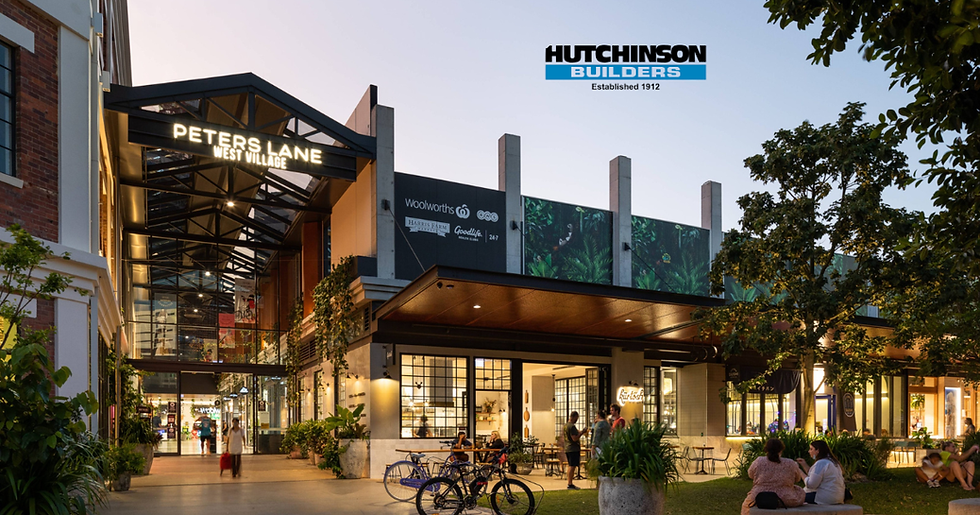Port of Rotterdam: Navigating through Time
- David Harreveld
- Apr 15, 2024
- 4 min read
Port of Rotterdam - Stats
The Port of Rotterdam is the largest seaport in Europe, and the world’s largest outside of East Asia (and the only European port in the world’s top 10):
It was the world’s busiest port by annual cargo tonnage from 1962 until 2004.
40km in length, giving 12,500ha of port space (land and water) including 6,000ha of industrial space.
4 container terminals to handle short-sea, deep-sea and inland shipping, and 20 container depots.
Annual cargo throughput of 438 million tonnes, serviced by 28,000 seagoing vessels and 90,000 inland vessels.
Handles almost twice the amount of cargo as the ports of Hamburg and Antwerp.
Employment (direct and indirect) 193,000 jobs.
Generates €30.6 billion annually, equivalent to 3.2% of Dutch GDP.

The Historical Evolution of the Port of Rotterdam
From its humble beginnings as a fishing village on reclaimed land in the mid-13th century, the Port of Rotterdam grew into a pivotal commercial hub by the 17th century, catering to the expansive trade networks of the Dutch colonial empire. Its strategic position, complemented by relentless expansions and innovations, propelled it to the forefront of global trade, especially after it pioneered bulk transshipment facilities in the 1920s and petrochemical complexes in the 1930s. World War II brought devastation, but the post-war era saw rapid reconstruction and modernization, solidifying Rotterdam's status as Europe's main oil transshipment and processing hub.
The Port Today: A Global Logistics Hub
As of today, the Port of Rotterdam is celebrated as one of the world's top 10 busiest ports, serving as the maritime gateway to Europe. It has continued to evolve, embracing technological advancements and digitalisation, thereby enhancing its operational efficiency and global connectivity. The port's extensive facilities and infrastructure, including 14 container terminals and a sprawling area of over 12,000 hectares, underscore its capacity to handle a staggering volume of cargo and a diverse range of maritime activities.
Innovations and Sustainability Efforts
The Port of Rotterdam is not just expanding; it's evolving with a keen eye on sustainability and innovation. It has taken significant strides in digital transformation, aiming to streamline operations and enhance safety and efficiency. Moreover, the port is actively engaging in initiatives to reduce its carbon footprint and promote clean energy, embodying the principles of sustainable development.
Pioneering Digitalization and Technological Innovation
The Port of Rotterdam is a frontrunner in adopting digital technologies, aiming to become the world's smartest port. Through initiatives like the Internet of Things (IoT) applications, AI, and blockchain technology, the port enhances operational efficiency, security, and logistics management. These technologies facilitate seamless data exchange and real-time monitoring, offering a competitive edge in the global maritime landscape. It’s focus is on the energy transition while contributing to the sustainable economy.
Leading the Charge in Sustainability
Sustainability is a cornerstone of the port's future strategy. The Port of Rotterdam Authority is dedicated to creating a carbon-neutral port by fostering renewable energy sources, including wind, solar, and hydrogen fuel. Ambitious projects, such as the development of green hydrogen production facilities and the transition to shore-based power to reduce emissions from moored ships, highlight the port's commitment to environmental stewardship. These efforts not only aim to mitigate climate change impacts but also ensure the port's long-term resilience and sustainability.
Expanding Horizons: The Maasvlakte II Project
A testament to Rotterdam's growth and adaptability is the Maasvlakte II project, which represents the most recent significant expansion of the port's territory on reclaimed land, opening in 2015. This project not only increased the port's capacity by 1,000ha but also incorporates state-of-the-art facilities designed for the latest generation of mega-ships. Maasvlakte II is a model of modern port development, combining increased capacity with stringent environmental and sustainability standards. The expansion further cements Rotterdam's position as a leading global maritime hub.
Future Prospects: Dealing with Climate Change
Ports and harbours are by their nature extremely susceptible to sea level increases, and none more so than those in The Netherlands, where a large part of the country exists below sea level. The Dutch government has over centuries invested in major land reclamation and water/storm surge protection engineering projects, including the Delta Works: a massive chain of flood protection structures (barriers, sluices, locks, dikes, and levees) located in the estuaries of the rivers Rhine, Meuse and Scheldt.
With work commencing after the horrific North Sea Flood of 1953, the Delta Works were completed in 1997. Its largest component is one of the largest moving structures on our planet – the Maeslantkering. It’s part of the Europoortkering project, which was designed specifically to minimise the impact of flooding on the Port of Rotterdam as well as the surrounding towns and agricultural areas.
The Maeslantkering had only been tested since 1997, until it closed for the first time to protect against Storm Pia in December 2023. But will the Maeslantkering and the rest of the Delta Works be enough to protect against future storms? It had better be - modelling has shown the impact of a 3.6m sea level surge (slightly larger than the 1953 storm surge of 3.35m above sea level) on the Port of Rotterdam and surrounds if the Maeslantkering does not close … and because the port is now so much bigger the impact is large.
Conclusion
The Port of Rotterdam's historic past, dynamic present, and bright future illustrate its pivotal role in shaping the contours of global trade. As it moves forward, the port remains focused on innovation, sustainability, and efficiency, ensuring its continued relevance and leadership in the global maritime industry. The journey of the Port of Rotterdam is far from complete; it is a beacon of progress, navigating through time toward a sustainable and prosperous future.
%20(1).png)





Comments